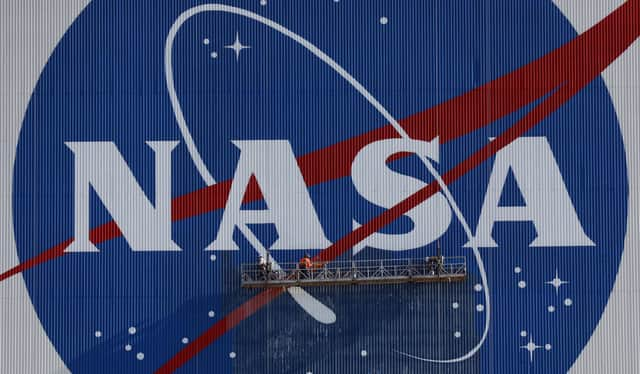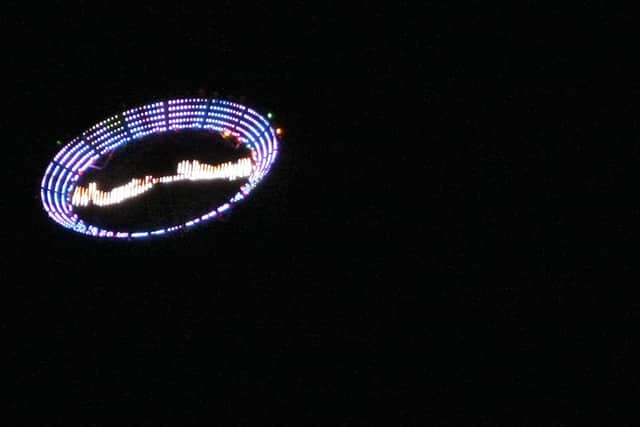UFO sightings in the UK: how many unidentified flying objects were recorded in 2022?


Nasa held its first public meeting on unidentified anomalous phenomena - or UAPs - on Wednesday (31 May), a year after it began its investigation into unexplained sightings.
The lengthy hearing held at Nasa's headquarters in Washington - which the public was able to join remotely - featured a diverse panel of experts, and was broadcast on television by the space agency.
Advertisement
Hide AdAdvertisement
Hide AdThe study is an initial attempt to provide an explanation for mysterious sky phenomena that cannot be readily identified or explained. The group is examining unclassified data currently available on the topic and how much more is required to understand what is going on in the sky.
Scott Kelly, the first American to spend close to a year in space, is one of 16 scientists and other experts on the team that Nasa hand-picked. Several committee members have experienced "online abuse" for participating in the team, which detracts from the scientific process, said Nasa’s Dan Evans.
So what have they found, and what do their findings mean for life on Earth? Here is everything you need to know.
What is a UAP?
UAP is a term used to describe sightings of aerial objects that cannot be readily identified or explained. These objects are observed in the airspace by pilots, military personnel or other credible witnesses, and their characteristics or behaviours do not conform to known aircraft or phenomena.
Advertisement
Hide AdAdvertisement
Hide AdIn 2020, the United States Department of Defense (DoD) established the Unidentified Aerial Phenomena Task Force (UAPTF) to investigate and gather data on these sightings, with a goal to determine if these UAPs represent potential threats to national security or if they have scientific explanations.
UAPs gained significant public attention due to the release of several videos captured by US military aircraft that showcased encounters with unidentified objects exhibiting extraordinary flight characteristics and appearing to defy known aerodynamic capabilities.
In April 2021, the DoD confirmed the authenticity of these videos and officially released them to the public, an acknowledgement by the government that marked a shift in the approach to investigating and understanding UAPs.
NASA's involvement in the study of UAPs primarily relates to its expertise in aerospace research and exploration, as well as its access to advanced technologies and scientific knowledge.
Advertisement
Hide AdAdvertisement
Hide AdBut the term "UAP" does not necessarily imply extraterrestrial origins or advanced technologies, and is used to highlight the fact that these objects remain unidentified and require further investigation to determine their nature and origin.


In a sense, the term UAP is a 're-branded' version of UFO (or unidentified flying object), a more modern and inclusive term that encompasses a broader range of sightings beyond just flying objects and is used to emphasise the need for further investigation and scientific inquiry, rather than assuming they are necessarily of extraterrestrial origin.
UAP itself originally stood for unidentified aerial phenomena, but was updated to mean unidentified anomalous phenomena.
UFO sightings in the UK
A total of 497 UFO sightings were reported in England, Wales, Scotland, and Northern Ireland in 2022, according to the organisation UFO Identified, which compiled data from local and national media as well as FOI (Freedom of Information) requests.
Advertisement
Hide AdAdvertisement
Hide AdMore sightings were reported in England over the course of three years than in Scotland, Wales or Northern Ireland. With the exception of Northern Ireland, which consistently reported fewer sightings, there has been an increase in sightings across all nations.
The majority of the 497 reports - 411 of them - occurred in England, as opposed to 52 sightings in Scotland, 30 in Wales, and only 4 in Northern Ireland. The South East, the North West, and the South West were the regions of England with the most UFO sighting reports in 2022, according to data, with 75, 68, and 60 reports respectively.
The launch of the Starlink internet satellites, a SpaceX project that began in 2019, can explain some of the reports in 2020. British skywatchers enquired about this "train of lights" in March and April of 2020, and there were numerous posts and videos of the satellites on Twitter during that time.
Have we been visited by aliens?
Now, on to bad news. Or good news, depending on your views of intergalactic visitors potentially waging war on our little planet.
Advertisement
Hide AdAdvertisement
Hide Ad“I want to emphasise this loud and proud: There is absolutely no convincing evidence for extraterrestrial life associated with unidentified objects,” Evans said after the meeting.
But the team's investigations do not involve any classified military information, such as anything surrounding the alleged Chinese spy balloons seen over the US earlier this year. A final report is anticipated, by the end of July.
Sean Kirkpatrick, director of the All-domain Anomaly Resolution Office (AARO), a division of the US Defense Department, said during the meeting: "We have 50 to 100-ish new reports each month." But he said that only 2% to 5% of the database's sightings are "possibly really anomalous."
Also during the meeting, a burst of radio waves detected by scientists in Australia was mentioned by David Spergel, head of NASA's UAP team. "They had really strange structure. People couldn't figure out what was going on. Then they start to notice a lot of them bunched together around lunch time," he said.
But it turned out that the researchers' sensitive equipment was picking up signals from the microwave they were using to heat their lunches...
Comment Guidelines
National World encourages reader discussion on our stories. User feedback, insights and back-and-forth exchanges add a rich layer of context to reporting. Please review our Community Guidelines before commenting.
